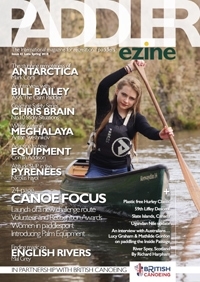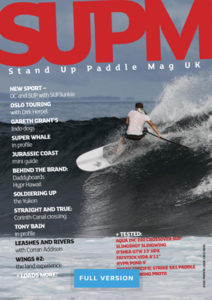River gradings. You might have noticed when you look for a Paddle Trail or PaddlePoint or look up your local river, there is usually a ‘grade’ comment next to it.
These range from grade 1 to grade 6 and have significant meanings when it comes to paddling those rivers. You certainly wouldn’t want to get the gradings confused! Doing so could land you in hot, or rather ‘fast,’ water.
Each and every river in the UK and internationally has a grading. Rivers can actually have several gradings per river, meaning certain stretches within the river can be more difficult than others. Confusing right? Let’s break it down.
So what are the different gradings and what do they mean?
- Grade 1. Grade 1 means the water is moving, without rocks or other hazards to avoid, and without technical difficulties. Basically it means paddling it should be within most people’s abilities. It’s the ‘easiest’ river you can paddle and great for practicing on moving water if you’ve never paddled on it before. Typically grade 1 rivers have little ripples and waves that can wobble your boat a little, but once you’ve got your balance they’re a great practice river.
- Grade 2. Grade 2 rivers are the next step up from Grade 1. They can include waves and small stoppers which should be easy to navigate. They can also include eddies where you can catch your breath before moving on to the next set of rapids.
- Grade 3. Getting a little more technical, grade 3 rivers are more technically difficult. They also include distinctive waves and stoppers and sometimes even drops. How would you tell the difference between grade 2 and 3? Grade 3 rivers usually require you to paddle a certain route to avoid obstacles such as rocks along the river.
As the river gradings increase, so does the technical skill required… the higher the grade, the more skill and experience you will need as a paddler…
- Grade 4. Getting into the trickier end of the scale, Grade 4 rivers include severe waves, drops, stoppers and other possible objects that can affect the flow of the water. If you paddle Grade 4, you will be used to reading the river and inspecting a route from the bank before running that river. Because of the breadth of what Grade 4 encompasses, sometimes rapids within the river will be classified as Grade 4- or Grade 4+, indicating their intensity level.
- Grade 5. These rivers are extremely difficult and require an exceptional amount of skill and experience to navigate. They are very demanding and include stoppers, currents and powerful waves.
- Grade 6. Extreme on another level. Think of the most extreme rapids you’ve seen and make them even more ferocious. Grade 6 rapids will look un-runnable, but under the right circumstances and with the right amount of skill and experience, they can sometimes be possible.
On top of all of this, it’s important to remember with excessive or limited rainfall that river gradings can change. Always check the river levels before you head out and assess the river in person before you get on. Does it look like how you expected? Are there any hazards to note? Do you have the required skill, equipment and/or experience to paddle here? All things to ask yourself before you head on the water.


 Go Paddling
Go Paddling Clear Access Clear Waters
Clear Access Clear Waters Paddles Up Training
Paddles Up Training Clubhouse
Clubhouse Services Login
Services Login

